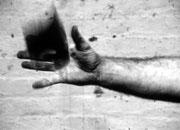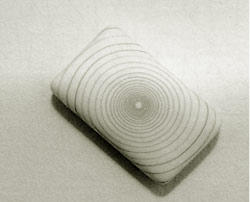I have to fundamentally disagree with you, Assemblagger. Art is first a social construct that we often project retroactively. Mideaval people would not consider what any of us do as art because for them art was the illustration of stories, alpha and omega. The native people of Easter Island would not consider what we do as art because human creativity applied itself in other areas but was never given a field of its own in that culture.
The who and the why come even before the possiblity of what and how, because the frame of art is culturally determined. Why should rhyming words on a page be considered a different project than dozens on the street - who and why. Why is building a robot that draws the results of competing radio shows different from building a robot that will plot the background noise of the galaxy against intentional noise? You're doing it for art and the engineer is doing it for discovery.
When an artist takes a material and makes abstract work the artist has already taken in a set of values that determine the limitations of whats possible. In Western culture those values have been "aesthetics" which is one of the most culturally loaded words possible, fabrication or craft, and raw material.
When I hear critisism of "crapture" it is often really a criticism of that deviation from that cultural norm. I have heard many artists decry assemblage specifically because there was no craft involved. The creation of a visual artifact from pre-existing objects-in-themselves is a different way of thinking about art because it re-defines art as something other than rarefied design.
The who and the why come even before the possiblity of what and how, because the frame of art is culturally determined. Why should rhyming words on a page be considered a different project than dozens on the street - who and why. Why is building a robot that draws the results of competing radio shows different from building a robot that will plot the background noise of the galaxy against intentional noise? You're doing it for art and the engineer is doing it for discovery.
When an artist takes a material and makes abstract work the artist has already taken in a set of values that determine the limitations of whats possible. In Western culture those values have been "aesthetics" which is one of the most culturally loaded words possible, fabrication or craft, and raw material.
When I hear critisism of "crapture" it is often really a criticism of that deviation from that cultural norm. I have heard many artists decry assemblage specifically because there was no craft involved. The creation of a visual artifact from pre-existing objects-in-themselves is a different way of thinking about art because it re-defines art as something other than rarefied design.








